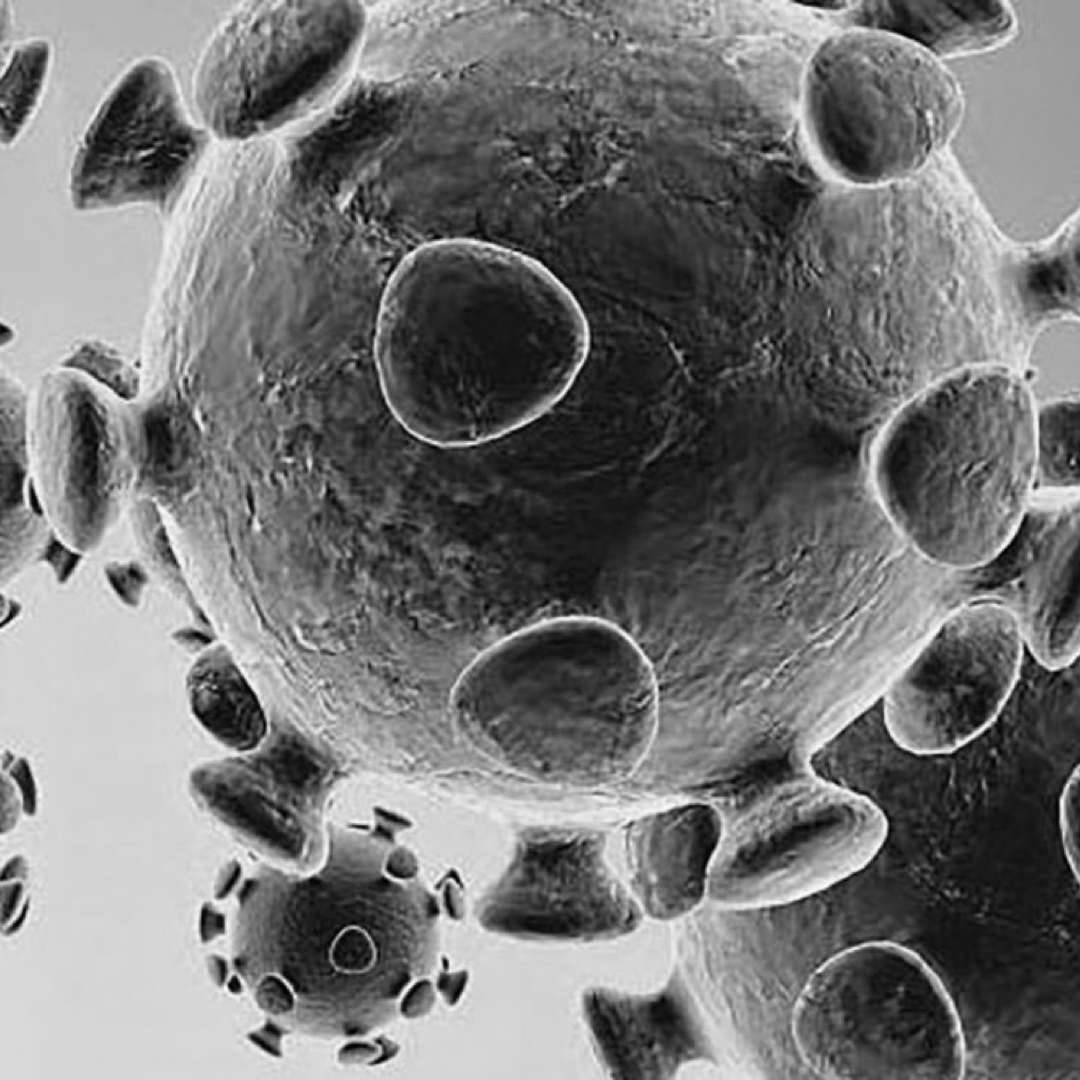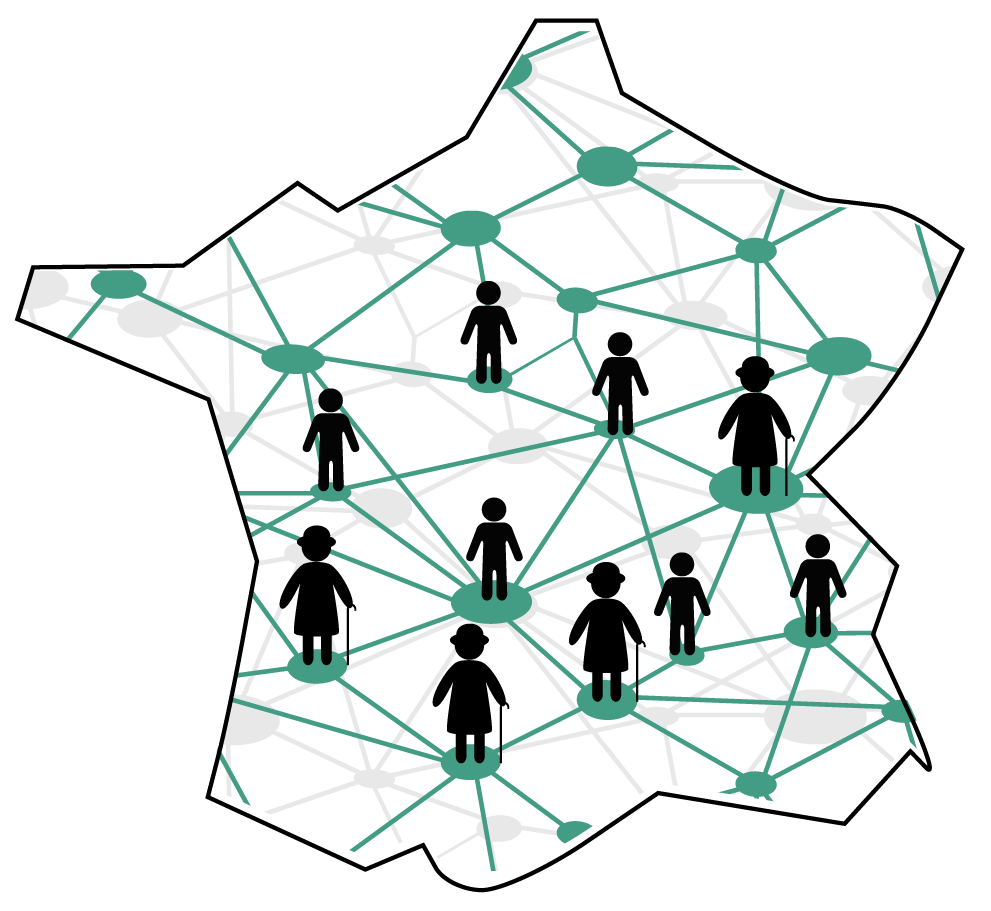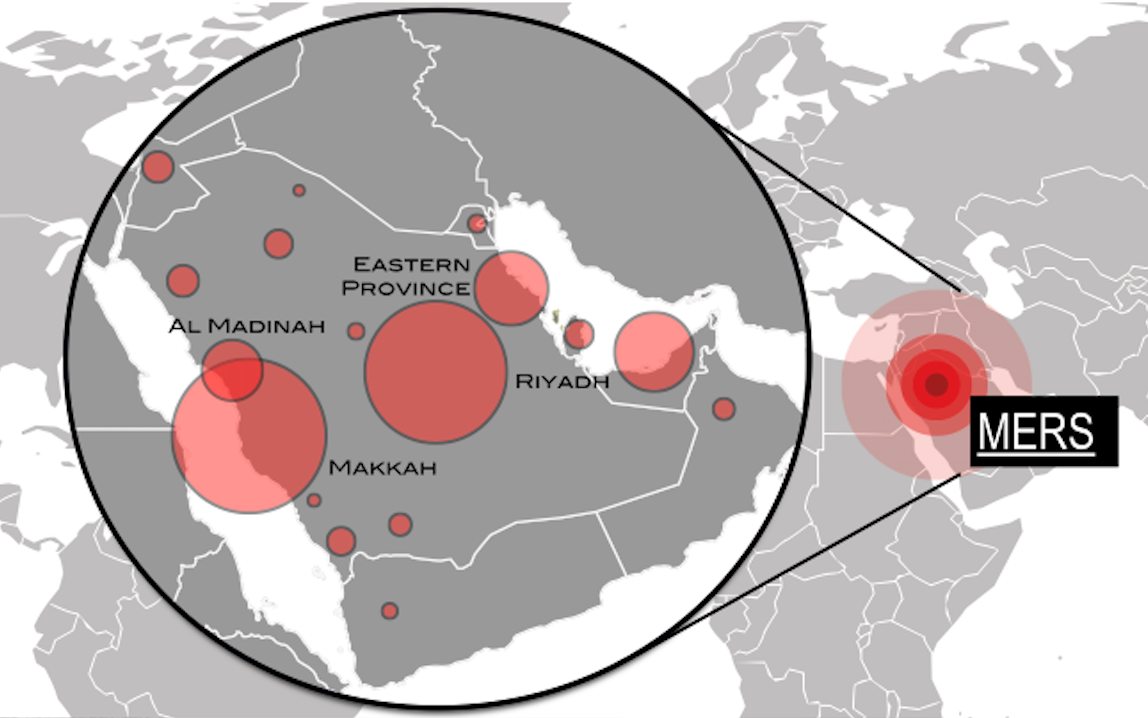COVID-19 |
|---|
|
Fundings: Haute Autorité de Santé, ANR Flash Covid-19, the Fondation de France, the program Emergence(s) of municipality of Paris. Selected publications: B Faucher, R Assab, J Roux, D Levy-Bruhl, C Tran Kiem, et al Nat Commun 13, 1414 (2022) JA Moreno López, B Arregui-Garcĺa, P Bentkowski, L Bioglio, F Pinotti, et al Sci Adv 7 (2021) F Pinotti, L Di Domenico, E Ortega, M Mancastroppa, G Pullano, et al PLoS Med 17(7) (2020) G Pullano, F Pinotti, E Valdano, P-Y Boëlle, C Poletto, V Colizza Eurosurveillance, 25(4) (2020) Reports: Evolution du nombre de tests positifs, des nouvelles hospitalisations et des admissions en soins critiques pour COVID-19 apres la mise en place des mesures sanitaires renforcées, Mars-Avril 2021 (available here) Evaluation des stratégies vaccinales COVID-19 avec un modèle mathématique populationnel (available here) Doubling time of COVID-19 hospitalizations in regions in France (available here) Evaluation of StopCovid (available here) |
uncovering the drivers of Influenza |
|---|
|
Fundings: DMM at the University of Padova, the program Starting Package from the Cariparo Foundation, the program Emergence(s) of municipality of Paris. Selected publications: F Bonacina, P-Y Boëlle, V Colizza, O Lopez, M Thomas, C Poletto, Int J Inf Dis 128 (2023) |
host contacts and multi-pathogen interaction |
|---|
|
Fundings: The program Emergence(s) of municipality of Paris. Selected pubications: F Pinotti, É Fleury, D Guillemot, P-Y Böelle, C Poletto PLoS Comput Biol 15(5) (2019) C Poletto, S Meloni, A Van Metre, V Colizza, Y Moreno, A Vespignani, Sci Rep 5, 7895 (2015) C Poletto, S Meloni, V Colizza, Y Moreno, A Vespignani, PLoS Comput Biol 9(8): e1003169 (2013) |
emerging diseases and outbreak analysis |
|---|
|
Fundings: Haute Autorité de Santé, ANR Flash Covid-19, the Fondation de France, the program Emergence(s) of municipality of Paris. Selected publications: J Riou, C Poletto, P-Y Boëlle, Epidemics 19 (2017) C Poletto , P-Y Boëlle, V Colizza, BMC Infect Dis 16(1) 448 (2016) C Poletto, C Pelat, D Levy-Bruhl, Y Yazdanpanah, P-Y Boëlle, et al Euro Surveill 19:23 (2014) C Poletto, M F C Gomes, A Pastore y Piontti, L Rossi, L Bioglio, et al Euro Surveill 19:42 (2014) D Balcan, H Hu, B Goncalves, P Bajardi, C Poletto, et al BMC Med, 7:45 (2009) |
epidemic risk and vulnerability |
|---|
|
Selected publications: E Valdano, M Re Fiorentin, C Poletto, and V Colizza, PRL 120, 068302 (2018) E Valdano, L Ferreri, C Poletto, V Colizza, PRX 5 021005 (2015) A Apolloni, C Poletto, J J Ramasco , P Jensen, V Colizza, Theor Biol Med Model 11 (1), 3 (2014) C Poletto, M Tizzoni, V Colizza, Sci Rep 2:476 (2012) |
 Since the early days following the virus emergence we are working on the spread of SARS-CoV-2. During the pandemic stage we have provided real-time analyses on the outbreak unfolding, focusing mainly on the risk of international propagation. In addition, we have developed an agent-based model for scenario anaysis, which has made possible to provide projections on the effectiveness of the digital contact tracing app and to estimate the potential impact of reactive vaccinaiton. These studies were communicated to public heath authorities or done in direct collaboration with them to support decision making.
Since the early days following the virus emergence we are working on the spread of SARS-CoV-2. During the pandemic stage we have provided real-time analyses on the outbreak unfolding, focusing mainly on the risk of international propagation. In addition, we have developed an agent-based model for scenario anaysis, which has made possible to provide projections on the effectiveness of the digital contact tracing app and to estimate the potential impact of reactive vaccinaiton. These studies were communicated to public heath authorities or done in direct collaboration with them to support decision making.  Each winter the influenza virus causes a substantial number
of infections, hospitalization and deaths. Virus characteristics and population at risk
varies from year to year, which makes difficult the planning of medical resources and
vaccination. Many questions are still open regarding the spread and the evolution of
the virus: how the interplay between social contacts and susceptibility in young and
elderly individuals affect virus dynamics? How do different variants of the virus interact
and how can we explain the resulting co-existence pattern observed at different scales? Social restrictions during the COVID-19 pandemic have perturbed the dynamics of seaonal influenza. The viral circulation has declined for a couple of years to resume again with out-of-season waves. This unique situation provides a natural experiment to investigate hyptheses on the drivers of influenza propagation. We are combining statistical, mathematical and computational approaches and integrating diverse data sources to tackle this challenge.
Each winter the influenza virus causes a substantial number
of infections, hospitalization and deaths. Virus characteristics and population at risk
varies from year to year, which makes difficult the planning of medical resources and
vaccination. Many questions are still open regarding the spread and the evolution of
the virus: how the interplay between social contacts and susceptibility in young and
elderly individuals affect virus dynamics? How do different variants of the virus interact
and how can we explain the resulting co-existence pattern observed at different scales? Social restrictions during the COVID-19 pandemic have perturbed the dynamics of seaonal influenza. The viral circulation has declined for a couple of years to resume again with out-of-season waves. This unique situation provides a natural experiment to investigate hyptheses on the drivers of influenza propagation. We are combining statistical, mathematical and computational approaches and integrating diverse data sources to tackle this challenge. Across the fields of biology, ecology, epidemiology and public health,
an increasing attention is recently devoted to the web of
interactions taking place among infectious disease agents and
between the pathogens and the living species hosting
them. Indeed, pathogens do not spread in isolation and disease
outbreaks are the result of complex ecological processes where
different infectious agents compete, cooperate, and undergo
mutations. The host contact network, which is
the substrate of infection transmissions, is heterogeneous,
high-dimensional and dynamics. Understanding the complex
interplay between host behaviour and multi-pathogen/multi-strain
interaction is key to address major public health
emergencies, such as the spread of antibiotic resistance,
concurrence of HIV and tuberculosis and the
co-circulation of influenza strains. We design dynamical models on networks
to uncover the essential mechanisms underpinning pathogen
emergence and co-existence. Our work has implications in
disease ecology and address open challenges in network physics.
Across the fields of biology, ecology, epidemiology and public health,
an increasing attention is recently devoted to the web of
interactions taking place among infectious disease agents and
between the pathogens and the living species hosting
them. Indeed, pathogens do not spread in isolation and disease
outbreaks are the result of complex ecological processes where
different infectious agents compete, cooperate, and undergo
mutations. The host contact network, which is
the substrate of infection transmissions, is heterogeneous,
high-dimensional and dynamics. Understanding the complex
interplay between host behaviour and multi-pathogen/multi-strain
interaction is key to address major public health
emergencies, such as the spread of antibiotic resistance,
concurrence of HIV and tuberculosis and the
co-circulation of influenza strains. We design dynamical models on networks
to uncover the essential mechanisms underpinning pathogen
emergence and co-existence. Our work has implications in
disease ecology and address open challenges in network physics.
 (Re-)emerging pathogens, represent a public health threat. When a new
pathogen emerges from a zoonotic source the many biological and
epidemiological uncertainties hinder a prompt health
response. Improving our capabilities to understand the outbreak
dynamics is a scientific challenge. We combine data
analysis and integration, computational programming and epidemiological
statistics to quantify the epidemic unfolding and provide
risk assessment and projections. We carried out real-time analysis
of the recent outbreaks of pandemic Influenza, MERS-CoV, Ebola,
Chikungunya, Zika and COVID-19. These studied shed light on the transmission
potential of the pathogen, the relative role of the different
transmission modes and the effectiveness of possible contaiment measures.
(Re-)emerging pathogens, represent a public health threat. When a new
pathogen emerges from a zoonotic source the many biological and
epidemiological uncertainties hinder a prompt health
response. Improving our capabilities to understand the outbreak
dynamics is a scientific challenge. We combine data
analysis and integration, computational programming and epidemiological
statistics to quantify the epidemic unfolding and provide
risk assessment and projections. We carried out real-time analysis
of the recent outbreaks of pandemic Influenza, MERS-CoV, Ebola,
Chikungunya, Zika and COVID-19. These studied shed light on the transmission
potential of the pathogen, the relative role of the different
transmission modes and the effectiveness of possible contaiment measures. The concept of epidemic threshold is fundamental in infectious disease
epidemiology. What are the conditions for a disease to turn an
epidemic? The network of contacts and its
temporal variability determine the spreading potential of a
disease. On a different scale, the chance of large-scale
geographical spread is affected by the mobility network of
individuals and their traveling behaviour. Modelling frameworks
like temporal networks and reaction-diffusion processes provide
the suitable formalism to characterise the transition epidemic
containment/invasion. Our contribution to this research line is
twofold: we provide mathematical tools to compute the
epidemic threshold, applicable in the most general case; we analyse
what specific features of the network
impact the threshold. Our goal is to quantify the vulnerability of the
population to an infection and aid to the design of containment measures.
The concept of epidemic threshold is fundamental in infectious disease
epidemiology. What are the conditions for a disease to turn an
epidemic? The network of contacts and its
temporal variability determine the spreading potential of a
disease. On a different scale, the chance of large-scale
geographical spread is affected by the mobility network of
individuals and their traveling behaviour. Modelling frameworks
like temporal networks and reaction-diffusion processes provide
the suitable formalism to characterise the transition epidemic
containment/invasion. Our contribution to this research line is
twofold: we provide mathematical tools to compute the
epidemic threshold, applicable in the most general case; we analyse
what specific features of the network
impact the threshold. Our goal is to quantify the vulnerability of the
population to an infection and aid to the design of containment measures.